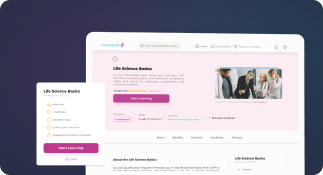Release for Distribution
Definition
Release for Distribution refers to the formal process by which a manufactured pharmaceutical or life sciences product is authorized for sale, shipment, or use after meeting all quality, regulatory, and compliance requirements. This critical step is typically performed by the Quality Assurance (QA) department, which reviews and approves the batch records and ensures that the product complies with Good Manufacturing Practices (GMP) and regulatory standards.
Detailed Explanation
The Release for Distribution process is a cornerstone of pharmaceutical manufacturing and quality management systems. It ensures that only products meeting predetermined specifications and regulatory requirements reach patients and consumers. This process is also known as Batch Release or Product Release and involves a series of meticulous checks and documentation reviews.
Purpose and Importance
The primary purpose of Release for Distribution is to safeguard public health by ensuring that every batch of product is safe, effective, and of high quality. Quality Assurance plays a pivotal role by:
- Reviewing batch manufacturing records and test results
- Confirming that deviations and non-conformances have been properly addressed
- Ensuring compliance with internal procedures and external regulatory requirements
- Providing final QA Sign-Off before the product can be distributed
Key Steps in the Release for Distribution Process
- Batch Record Review: QA reviews the complete batch records, including manufacturing and packaging documents.
- Analytical Testing Verification: All laboratory test results are checked to ensure they meet the product specifications.
- Deviation and CAPA Review: Any deviations from standard procedures are reviewed, and corrective actions are assessed.
- Final QA Approval: A QA officer or authorized person formally approves the batch for release by signing the release documentation.
- Release Notification: The approved batch is then cleared for shipment, sale, or use.
Contexts of Use
Release for Distribution is utilized in various contexts across the pharmaceutical and life sciences industries, including:
- Pharmaceutical Manufacturing: For the release of finished drug products.
- Biotechnology: For the distribution of biologics and biosimilars.
- Medical Devices: Ensuring devices meet regulatory standards before market release.
- Clinical Trial Materials: Releasing investigational products for use in clinical studies.
Examples
Consider a pharmaceutical company producing a batch of vaccines. Once the manufacturing and quality control testing are complete, the QA team will:
- Review the batch manufacturing records for completeness and accuracy
- Verify that all critical quality attributes meet the predefined acceptance criteria
- Ensure that any deviations during manufacturing were properly investigated and resolved
- Provide QA Sign-Off, authorizing the batch for distribution to healthcare providers
Related Terms
- Batch Release: The process of authorizing a specific batch for distribution or use.
- Product Release: Another term for the authorization of a product for distribution following QA approval.
- QA Sign-Off: The formal approval by QA personnel indicating a batch meets all required standards.



